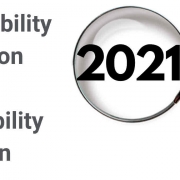Resolving Conflicts between Data Center Owners and Designers
Improving communication between the enterprise and design engineers during a capital project
For over 10 years, Uptime Institute has sought to improve the relationship between data center design engineers and data center owners. Yet, it is clear that issues remain.
Uptime Institute’s uniquely unbiased position—it does not design, construct, commission, operate, or provision equipment to data centers—affords direct insight into data center capital projects throughout the world. Uptime Institute develops this insight through relationships with Network members in North America, Latin America, EMEA, and Asia Pacific; the Accredited Tier Designer (ATD) community; and the owner/operators of 392 Tier Certified, high-performance data centers in 56 countries.
Despite increasingly sophisticated analyses and tools available to the industry, Uptime Institute continues to find that when an enterprise data center owner’s underlying assumptions at the outset of a capital project are not attuned to its business needs for performance and capacity, problematic operations issues can plague the data center for its entire life.
The most extreme cases can result in disrupted service life of the new data center. Disrupted service life may be classified in three broad categories.
1. Limited flexibility
- The resulting facility does not the meet the performance requirements of an IT deployment that could have been reasonably forecast
- The resulting facility is difficult to operate, and staff may avoid using performance or efficiency features in the design
2. Insufficient capacity
- Another deployment (either new build, expansion, or colocation) must be launched earlier than expected
- The Enterprise must again fund and resource a definition, justification, and implementation phase with all the associated business disruptions
- The project is cancelled and capacity sought elsewhere
3. Excess capacity
- Stranded assets in terms of space, power, and/or cooling represent a poor use of the Enterprise’s capital resources
- Efficiency is diminished over the long term due to low utilization of equipment and space
- Capital and operating cost per piece of IT or network equipment is untenable
Any data center capital project is subject to complex challenges. Overtime and over-budget considerations, such as inclement weather, delayed equipment delivery, overwhelmed local resources, slow-moving permitting and approval bureaucracies, lack of availability of public utilities (power, water, gas), merger or acquisition, or other shift in corporate strategy, may be outside of the direct control of the enterprise.
But other causes of overtime and over-budget are avoidable and can be dealt with effectively during the pre-design phase. Unfortunately, many of these issues become clear to the Enterprise after the project management, design, construction, and commissioning teams have completed their obligations.
Planning and justifying major data center projects has been a longstanding topic of research and education for Uptime Institute. Nevertheless, the global scale of planning shortfalls and project communication issues only became clear due to insight gained through the rapid expansion of Tier Certifications.
Even before a Tier Certification contract is signed, Uptime Institute requests a project profile, composed of key characteristics including size, capacity, density, phasing, and Tier objective(s). This information helps Uptime Institute determine the level of effort required for Tier Certification, based on similar projects. Additionally, this allows Uptime Institute to provide upfront counsel on common shortfalls and items of concern based upon our experience of similar projects.
Furthermore, a project team may update or amend the project profile to maintain cost controls. Yet, Uptime Institute noted significant variances in these updated profiles in terms of density, capacity, and Tier. It is acknowledged that an owner may decide to amend the size of a data center, or to adjust phasing, to limit initial capital costs or otherwise better respond to business needs. But a project that moves up and down the Tier levels or varies dramatically in density from one profile to another indicates management and communication issues.
These issues result in project delays, work stoppages, or cancellations. And if the project is completed, it can be expected to lack in terms of capacity (either too much or too little), meeting performance requirements (in design or facility), and flexibility.
Typically, a Tier Certification inquiry occurs after a business need has been established for a data enter project and a data center design engineer has been contracted. Unstable Certification profiles show that a project may have prematurely been moved into the design phase, with cost, schedule, and credibility consequences for a number of parties—notably, the owner and the designer.
Addressing the Communications Gap
Beginning in May 2013, Uptime Institute engaged the industry to address this management and communication issue on a broader basis. Anecdotally, both sides, via the Network or ATD courses, had voiced concerned that one had insufficient insight into the scope or responsibility, or unrealistic expectations, of the other. For example, a design engineer would typically be contracted to produce an executable design but soon find out that the owner was not ready to make the decisions that would allow the design process to begin. On the other hand, owners found that the design engineers lacked commitment to innovation, and they would be delivered a solution that was similar to a previous project rather than vetted against established performance and operations requirements. This initiative was entitled Owners vs Designers (OvD) to call attention to a tension evident between these two responsibilities.
The Uptime Institute’s approach was to meet with the designers and owners separately to gather feedback and recommendations and to then reconcile the feedback and recommendations in a publication.
OvD began with the ATD community during a special session at Uptime Institute Symposium in May 2013. Participants were predominantly senior design engineers with experience in the U.S., Canada, Brasil, Mexico, Kenya, Australia, Saudi Arabia, Lebanon, Germany, Oman, and Russia. This initial session verified the need for more attention to this issue.
The design engineers’ overwhelming guidance to owners could be summarized as “know what you want.” The following issues were raised specifically and repeatedly:
1. Lack of credible IT forecasting
- Without a credible IT requirements definition, it is difficult to establish the basic project profile (size, density, capacity, phasing, and Tier). As this information is discovered, the profile changes, requiring significant delays and rework.
- In the absence of an IT forecast, designers have to make assumptions about IT equipment. The designers felt that that this task is outside their design contract and they are hired to be data center design experts, not IT planning experts.
2. Lack of detailed Facilities Technical Requirements
- The absence of detailed Facilities Technical Requirements forces designers to complete a project definitions document themselves because a formal design exercise cannot be launched in its absenceSome designers offer, or are forced, to complete the Facilities Technical Requirements, although it is out-of-scope
- Others hesitated to do so as this is an extensive effort that requires knowledge and input from a variety of stakeholders
- Others acknowledged that this process is outside their core competency and the result could be compromised by schedule pressures or limited experience
3. Misalignment of available budget and performance expectations
- Owners wanted low capital expense, operating expense, and cost of ownership over the life of the project.
- Most solutions cannot satisfy all three. The owners should establish the highest priority (Capex, Opex, TCO).
- Designers felt unduly criticized for not prioritizing energy efficiencies in data center designs, although the owners did not understand the correlation between Capex and efficiency. “Saving money takes money; a cheap data center design is rarely efficient.”
Data Center Owners Respond
Following the initial meeting with the data center design community, Uptime Institute brought the discussion to data center owners and operators in the Uptime Institute Network throughout 2013, at the North America Network Meeting in Seattle, WA, APAC Network Meeting in Shenzhen, China, and at the Fall Network Meeting in Scottsdale, AZ.
Uptime Institute solicited input from the owners and also presented the designers’ perspective to the Network members. The problems the engineering community identified resonated with the Operations professionals. However, the owners also identified multiple problems encountered on the design side of a capital project.
In the owner’s words, “designers, do your job.”
According to the owners, the design community is responsible for drawing out the owners’ requirements, providing multiple options, and identifying and explaining potential costs. Common problems in the owners’ experience include:
- Conflicts often arise between the design team and outside consultants hired by owners
- Various stakeholders in the owner’s organization have different agendas that confuse priorities
- Isolated IT and Facilities teams result in capacity planning problems
- Design teams are reluctant to stray from their preferred designs
The data center owner community agreed with the designer’s perspective and took responsibility for those shortcomings. But the owners pointed out that many design firms promote cookie-cutter solutions and are reluctant to stray from their preferred topologies and equipment-based solutions. One participant shared that he received data center design documents for a project with the name of the design firm’s previous customer still on the paperwork.
Recommendations
Throughout this process, Uptime Institute worked to collect and synthesize the feedback and potential solutions to chronic communications problems between these two constituencies. The following best practices will improve management and communication throughout the project planning and development, with lasting positive effect on the operations lifecycle.
Pre-Design Phase
All communities that participated in OvD discussions understood the need to unite stakeholders throughout the project and the importance of reviewing documentation and tracking changes throughout. Owners and designers also agreed on the need to invest time and budget for pre-design, specifically including documenting the IT Capacity Plan with near-term, mid-term, and long-term scenarios.
The owners and designers also agreed on the importance of building Facilities Technical Requirements that are responsive to the IT Capacity Plan and includes essential project parameters:
- Capacity (initial and ultimate)
- Tiers[s]
- Redundancy
- Density
- Phased implementation strategy
- Configuration preferences
- Technology preferences
- Operations requirements
- Level of innovation
- Energy efficiency objectives
- Computer Room Master Plan
Workshop Computer Room Master Plans with IT, Facilities, Corporate Real Estate, Security, and other stakeholders and then incorporate them into the Facilities Technical Requirements. After preparing the Facilities Technical Requirements, invite key stakeholders to ratify the document. This recommendation does not prohibit changes later but provides a basis of understanding and launch point for the project. Following ratification, brief the executive (or board). This and subsequent briefings can provide the appropriate forum for communicating the costs associated with various design alternatives, but also how they deliver business value.
RFP and Hiring
Provide as much detail about project requirements as possible in the RFP, including an excerpt of Facilities Technical Requirements in the RFP itself and technology and operations preferences and requirements. This allows respondents to the RFP to begin to understand the project and respond with most relevant experience. Also, given that many RFPs compel some level of at-risk design work, a detailed RFP will best guide this qualification period and facilitate the choice of the right design firm. Inclusion of details in the RFP does not prohibit the design from changing during its development and implementation.
Negotiate in person as much as possible. Owners regretted not spending more time with the design firm(s) before a formal engagement as misalignments only became evident once it was too late. Also, multiple owners remarked with pride that they walked out of a negotiation at least once. This demonstrated their own commitment to their projects and set a tone of consequences and accountability for poor or insufficient communication.
Assess and score the culture of the design firms for alignment with the owner’s preferred mode and tone of operations. Owners commented that they preferred a small and local design firm, which may require some additional investment in training, but they were confident would get more careful and close attention in return.
Notify the design engineer from the outset of specific requirements and indicators of success to pre-empt receiving a generic or reconstituted design.
Should the owner engage an outside consultant, avoid setting an aggressive tone for consultants. Owners may want to augment their internal team with a trusted advisor resource. Yet, this role can inadvertently result in the consultant assuming the role of guard dog, rather than focusing on collaboration and facilitation.
Design and Subsequent Phases
Owners and designers agreed that a design effort was a management challenge rather than a technical one. An active and engaged owner yields a more responsive and operable design. Those owners that viewed it as outsourcing the production/fabrication effort of a data center struggled with the resulting solution. The following recommendations will reduce surprises during or after the project.
- Success was defined not as a discrete number of meetings or reports, but as being contingent upon establishing and managing a communication system.
Key components of this system include the following:
- Glossary of terms: Stakeholders will have varying experience or expertise and some terms may be foreign or misconceived. A glossary of terms established a consistent vocabulary, encourages questions, and builds common understanding.
- List of stakeholders: Stakeholders may vary, but identifying the ‘clients’ of the data center helps to establish and maintain accountability.
- Document all changes: The owner must be able to evidence the circumstances and reasons behind any changes. These are a natural aspect of a complex data center project, but knowing the decision made and why will be key to setting expectations and successful operation of the data center.
- Notify stakeholders of changes to IT Capacity Plans, Facilities Technical Requirements, and design documents. This will also help executive and non-technical stakeholders to feel engaged without disruption(s) to the project low and allow the project stakeholders to provide accurate and timely answers when decisions are questioned during or after the project.
As the recommendations were compiled from the OvD initiative, many of the recommendations resonated with Uptime Institute guidance of years past. Over 10 years ago, Ken Brill and Pitt Turner held seminars on project governance that touched upon a number of the items herein. It is an old problem, but just as relevant.
Key Quotes from the Design Community
Owners want to design to Tier III, but they want to pay for Tier II and get Tier IV performance.
Owners want technologies or designs that don’t work in their region or budget.
The IT people are not at the table, and engineers don’t have adequate opportunity to understand their requirements. Designers are often trying to meet the demands of an absent, remote, or shielded IT client who lives in a state of constant crisis.
Once the project is defined, it’s in the hands of the general contractor and commercial real estate group. Intermediaries may not have data center experience, and engineers aren’t in direct contract with the end user anymore.
Industry Perspectives
 Chris Crosby, CEO, Compass Datacenters
Chris Crosby, CEO, Compass Datacenters
There are some days when I’d like to throw architects and engineers off the roof. They don’t read their own documents, for example, putting in boilerplate that has nothing to do with the current project in a spec. They can also believe that they know better than the owner—making assumptions and changes independent of what you have clearly told them on paper that you want. It drives me nuts because as an owner you may not catch it until it has cost you a hundred grand, since it just gets slipsheeted into some detail or RFI response with no communication back to you.
 Dennis R. Julian, PE, ATD, Principal, Integrated Design Group, Inc.
Dennis R. Julian, PE, ATD, Principal, Integrated Design Group, Inc.
Data center designs are detail oriented. Missing a relatively minor item (e.g. control circuit), could result in shutting down the IT equipment. When schedules are compressed, it is more difficult and requires more experienced design personnel to flush out the details, do the analysis, and provide options with recommendations required for a successful solution.
There are pressures to stick with proven designs when:
- Fees are low. Standard designs are used so less experienced personnel may be used to meet budgets.
- Schedules are compressed. Reuse of existing designs and minimizing options and analysis speeds up completion of the design.
Good design saves capital and operating costs over the life of the facility and vastly dwarfs any savings in design fees. Selecting designers based on qualifications and not fees, similar to the Brooks Act regulating the selection of engineers by the U.S. Federal government (Public Law 92-582 92nd Congress, H.R. 12807. October 27, 1972) and allowing reasonable schedules will allow the discussion about the client’s goals and needs and the time to review alternatives for the most cost-effective solution based on total cost of ownership.
Julian Kudritzki joined the Uptime Institute in 2004 and currently serves as Chief Operating Officer. He is responsible for the global proliferation of Uptime Institute Standards. He has supported the founding of Uptime Institute offices in numerous regions, including Brasil, Russia, and North Asia. He has collaborated on the development of numerous Uptime Institute publications, education programs, and unique initiatives such as Server Roundup and FORCSS. He is based in Seattle, WA.
 Matt Stansberry is director of Content and Publications for the Uptime Institute and also serves as program director for the Uptime Institute Symposium, an annual spring event that brings together 1,500 stakeholders in enterprise IT, data center facilities, and corporate real estate to deal with the critical issues surrounding enterprise computing. He was formerly Editorial Director for Tech Target’s Data Center and Virtualization media group, and was managing editor of Today’s Facility Manager magazine. He has reported on the convergence of IT and Facilities for more than a decade.
Matt Stansberry is director of Content and Publications for the Uptime Institute and also serves as program director for the Uptime Institute Symposium, an annual spring event that brings together 1,500 stakeholders in enterprise IT, data center facilities, and corporate real estate to deal with the critical issues surrounding enterprise computing. He was formerly Editorial Director for Tech Target’s Data Center and Virtualization media group, and was managing editor of Today’s Facility Manager magazine. He has reported on the convergence of IT and Facilities for more than a decade.






 UI 2020
UI 2020
 2019
2019
